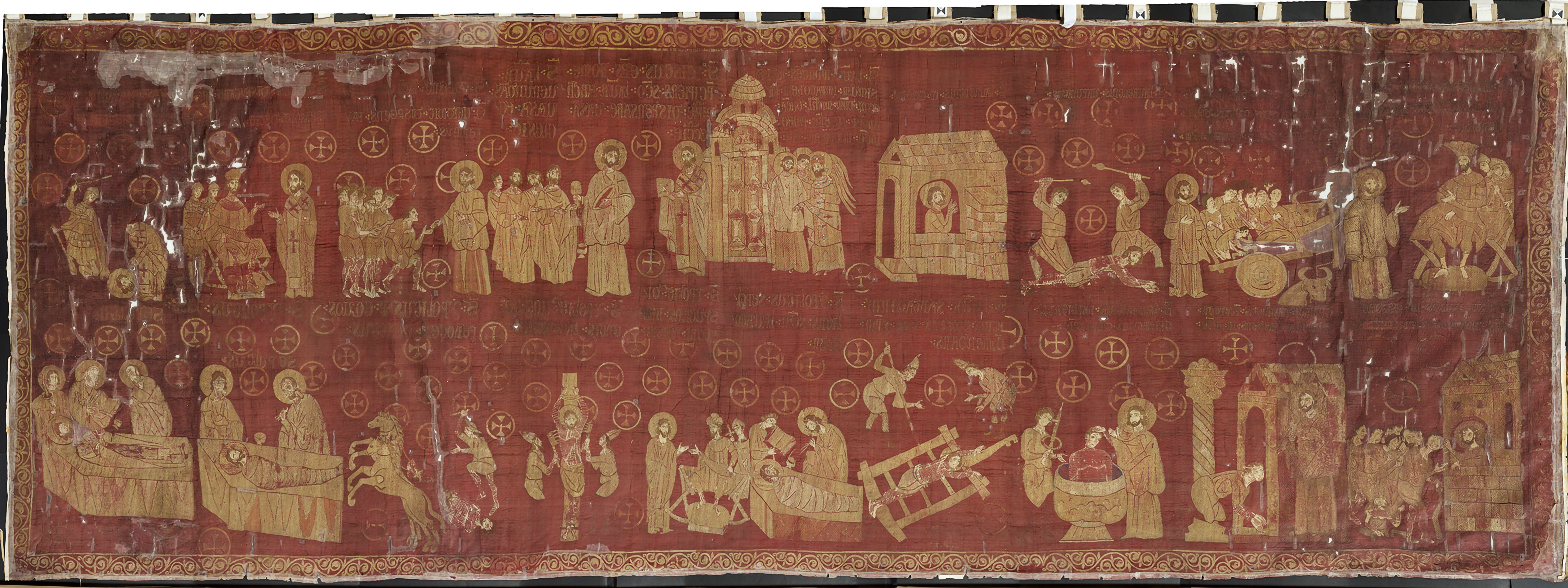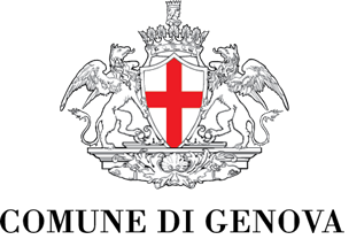
Click here to view image
Saint Lawrence's Pallium
ambito bizantino
Laboratorio tessile della corte bizantina di Nicea
samite
1261 - 1262 - XIII
PB 2073
Unità di misura: cm; Altezza: 132.3; Larghezza: 378.5
seta ricamato con fili di seta colorati, fili ricoperti di lamina d'argento e di lamina d'argento dorata
The desire for revenge of Genoa, defeated and driven out of Acre in 1258 by its Venetian and Pisan rivals, and of the Byzantine Empire, deprived of its legitimate capital by the Fourth Crusade in 1204, came together on 13 March 1261 when the Treaty of Nymphaeum was signed, aimed at guaranteeing Emperor Michael VIII Palaeologus the support of the Genoese fleet in the reconquest of Constantinople and, for the Genoese, the acquisition of great commercial advantages in imperial territory. To seal the agreement, Michael VIII gave the Genoese two cloths: one reproducing his image and of which traces are lost, and one consisting of the magnificent Pallium of San Lorenzo.
The Pallium is a masterpiece unique in the world for the unparalleled quality of its embroidery (sciàmito, "siamite", means “with six threads”, indicating the complexity of the weave, usually consisting of two warps and two or four wefts), made with polychrome silks and gold and silver threads, but also for the extraordinary amount of information it provides on the history of Genoa, on the history of the Byzantine Empire, on the relations between these two fundamental players in the history of the Mediterranean, and on Western and Eastern religiosity at a time somewhere between schism and the attempted reunification of the two churches.
The Pallium remained in the Cathedral until 1663 before being moved to the Palazzo dei Padri del Comune, in the mid 19th century to Palazzo Tursi, and finally in the early 20th century to Palazzo Bianco. It was later placed in the Museum of Sant'Agostino, where it will return once the work is completed. The Pallium narrates, in a stylistic language already foreshadowing the manner of the so-called “Palaeologian Revival”, the history and martyrdoms of the three western saints, Lawrence, Sixtus and Hippolytus. The narrative unfolds on two registers; in the centre of the imposing silk swarm is a pivotal image of the Emperor himself who, accompanied by Saint Lawrence and the archangel Michael, enters the Genoese cathedral, dedicated to Saint Lawrence.
The emperor Palaeologus is placed in stark contrast to the Roman emperor Decius, persecutor of Christians and protagonist of the stories depicted together with the three martyred saints.



